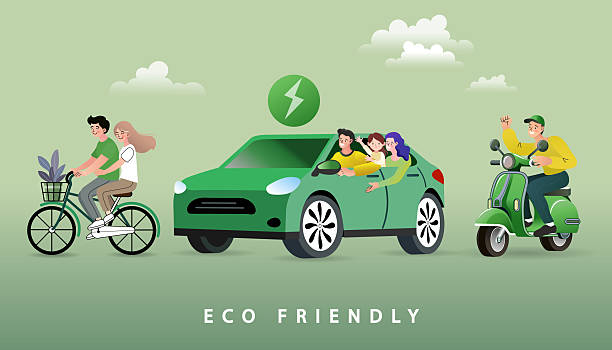Key Takeaways
- Electric and hybrid technologies are transforming the landscape of green transportation.
- Sustainable manufacturing materials are making car production less resource-intensive.
- Smart driving features and accessories can significantly reduce fuel usage and emissions.
Introduction
Modern drivers increasingly seek ways to reduce their environmental impact without sacrificing convenience or performance. As sustainability becomes a top priority, automakers respond with cutting-edge advancements that make green driving accessible for everyone. Whether you’re navigating daily commutes or planning weekend getaways, today’s models are loaded with features designed to minimize emissions and maximize efficiency. The array of eco-conscious vehicles offered by dealerships in Tampa FL, reflects this growing demand, making it easier than ever for drivers to align their vehicle choices with their values.
From enhanced fuel economy to innovative materials, the market now showcases a wide spectrum of vehicles and tech aimed at lowering the automotive carbon footprint. Simple changes in what you drive—and how you drive—can go a long way toward protecting the planet. The latest eco-friendly features are often accessible through many auto dealers Tampa FL, giving drivers the opportunity to embrace sustainability with their next car purchase.
Electric and Hybrid Powertrains
One of the most significant innovations for eco-friendly vehicles has been the rise of electric (EV) and hybrid powertrains. Fully electric vehicles such as the Ford Mustang Mach-E demonstrate that zero-emission transportation can be exciting and convenient. With ranges reaching over 300 miles on a single charge, these vehicles dispel the myth that green means less capable. Hybrids combine electric motors with gasoline engines, offering impressive fuel savings for those not ready to transition fully to electric. According to Consumer Reports, both options are helping drivers slash emissions while enjoying strong performance and lower operating costs.
Use of Sustainable Materials
Eco-conscious drivers are now looking beyond what powers their car to what it is made of. Automakers are increasingly using recycled plastics, renewable fibers, and reclaimed metals to reduce the environmental toll of manufacturing. For example, the Volvo EX30 features a cabin constructed from sustainable fabrics and recycled metal, setting a new benchmark for responsible production in the automotive world. These materials not only reduce waste but also support manufacturers’ broader commitments to carbon neutrality.
Regenerative Braking Systems
Regenerative braking is revolutionizing the way cars conserve energy. Rather than dissipating energy as heat during braking, this technology captures it and returns it to the battery, extending the driving range of electric and hybrid cars. The result? Drivers benefit from smoother deceleration and reduced wear on traditional brakes while capitalizing on every opportunity to be more energy efficient. Regenerative systems are now standard in many popular models, providing environmental and practical benefits alike.
Low-Rolling Resistance Tires
Tires play a key role in vehicle efficiency. Low-rolling resistance (LRR) tires reduce the energy needed to keep a car moving. By minimizing friction between tire and road, LRR tires help drivers achieve better fuel efficiency without sacrificing safety or performance. Upgrading to these tires is one of the simplest ways for eco-conscious motorists to boost their car’s sustainability profile.
Eco-Driving Assistants
Technology also empowers drivers to adjust their habits behind the wheel. Eco-driving assistants monitor the way you accelerate, brake, and maintain speed, delivering real-time feedback and coaching to help you cut down on fuel consumption. Some systems go further by gamifying efficient driving, encouraging users to compete with themselves or others as they learn to drive greener. This technology makes it easy for anyone to develop lifelong, energy-saving habits, no matter the make or model of their vehicle.
Route Optimization Tools
Planning your journey with route optimization tools can bring surprising benefits for the planet and your wallet. Navigation systems can recommend the most efficient routes by factoring in current traffic conditions, distance, and speed limits, helping you avoid congested areas and reduce unnecessary idling. According to a report from The New York Times’ Wirecutter, the latest GPS devices don’t just get you to your destination faster—they help minimize your environmental impact along the way.
Hydrogen Fuel Cell Vehicles
Beyond electric and hybrid technologies, hydrogen fuel cell vehicles (FCVs) are gaining traction as zero-emission alternatives. These vehicles generate energy by converting hydrogen into electricity, emitting only water vapor as a byproduct. While the infrastructure for hydrogen refueling is still growing, early adopters like the Toyota Mirai demonstrate that FCVs offer both green credentials and practical refueling times, offering an exciting glimpse into the future of clean mobility.
Conclusion
The age of eco-friendly driving is here. From vehicles powered by clean energy to accessories and smart systems that help cut emissions, drivers today have more sustainable choices than ever. Whether you’re opting for an all-electric model, exploring hydrogen power, or taking simple steps like choosing low-rolling resistance tires, the available innovations will help you confidently drive into a greener future. With support from progressive automakers and experienced local dealerships, making a positive environmental impact is simply part of the road ahead.






